The X-Ray Tetra is a small fish that many people like. Its see-through body makes it look cool. These fish live in groups and swim in the middle of tanks. They eat small bits of food and get along well with other fish.
Table of Contents
The name Pristella maxillaris comes from Latin. Pristella means “saw” and maxillaris refers to the jaw. This name was given because of the fish’s shape and mouth.
In pet stores, you might see them called X-Ray Fish or Golden Pristella Tetra. They belong to the Characidae family, which includes other tetras and piranhas.
These fish come from South America. They live in slow-moving waters with plants. In the wild, they eat tiny animals and plants. When kept as pets, they like flakes, small pellets, and frozen foods.
X-Ray Tetras grow to about 2 inches long. They can live up to 5 years with good care. The fish do best in groups of 6 or more. They need tanks that are at least 10 gallons big.
One fun fact is that these fish can change color based on their mood and surroundings. When happy, they show more yellow on their fins.
Scientists first wrote about X-Ray Tetras in 1894. Since then, they have been popular in the fish hobby. Their clear bodies let us see their insides, which is why people find them so interesting.
Some fish keepers have bred X-Ray Tetras at home. This helps protect wild populations. The fish lay eggs that stick to plants. After a few days, baby fish hatch and start to swim.
X-Ray Tetras are peaceful and active. They like clean water between 75-82°F. These fish don’t need special care, making them good for new fish keepers.
In research, scientists have studied how X-Ray Tetras grow and behave. Their clear bodies make it easy to watch their organs work. This helps us learn about fish health.
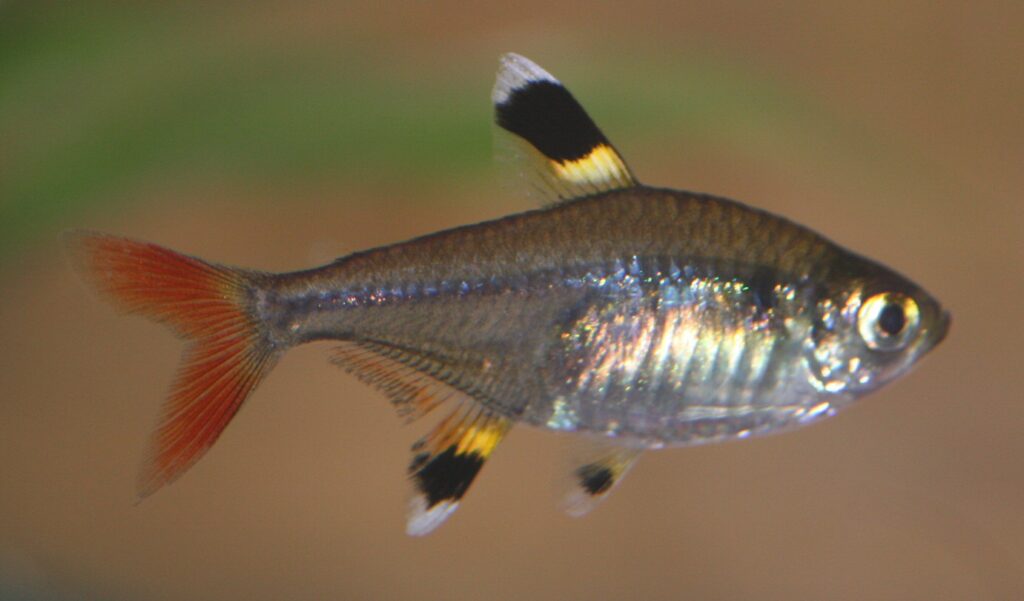
X-Ray Tetra Key Information
The X-Ray Tetra is a striking aquarium fish known for its see-through body. This small swimmer has a shiny, silver look with blue hints on its sides. What really stands out is its bright yellow-tipped top fin. Its tail fin often has a touch of red, making it even more eye-catching. These colors make the X-Ray Tetra a fun pick for fish tanks.
| Family | Characidae |
| Origin | South America |
| Price | $2-$5 each |
| Other Names | X-Ray Fish, Golden Pristella Tetra |
| Types | No special types known |
| Tank Size | 10-20 gallons |
| Water Needs | pH 6.0-7.5, 75-82°F |
| Life Span | 3-5 years |
| Full Size | Up to 2 inches |
| Natural Home | Slow rivers with lots of plants |
| How They Act | Friendly, active, like groups |
| Where They Swim | Middle of the tank |
| Tank Decor | Plants, wood, open spaces |
| Good Tank Friends | Other small, nice fish |
| Fish to Avoid | Big, mean fish |
| Food They Like | Flakes, tiny pellets, frozen foods |
| Health Issues | Can get common fish sickness |
| Change Gender | No |
| Boy or Girl? | Girls are bigger and rounder |
| Care Level | Easy for beginners |
| Breeding Ease | Can be done at home with care |
Ideal Tank Mates for X-Ray Tetra
When choosing tank mates for the X-Ray Tetra, it’s important to consider fish with similar temperaments and water requirements. The X-Ray Tetra is a peaceful, schooling fish that thrives in community tanks. Ideal companions should be non-aggressive and able to coexist in the same water conditions. Here are 10 compatible tank mates that can create a harmonious aquarium environment with the X-Ray Tetra:
Neon Tetra
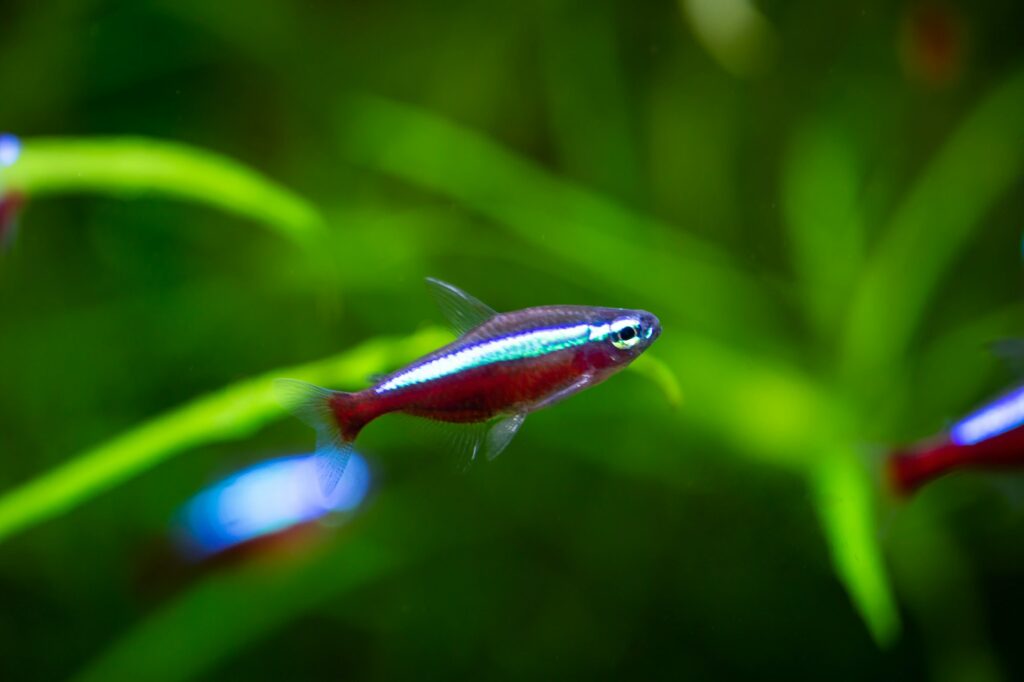
Neon Tetras are a classic choice for community tanks. Their vibrant blue and red coloration complements the X-Ray Tetra’s transparent body. Both species are schooling fish, creating a lively and dynamic tank environment.
| Common/Market Names | Price Range | Care Level | Behavior | Life Span | Max Size |
|---|---|---|---|---|---|
| Neon Tetra | $1-$3 | Easy | Peaceful | 5-8 years | 1.5 inches |
Corydoras Catfish
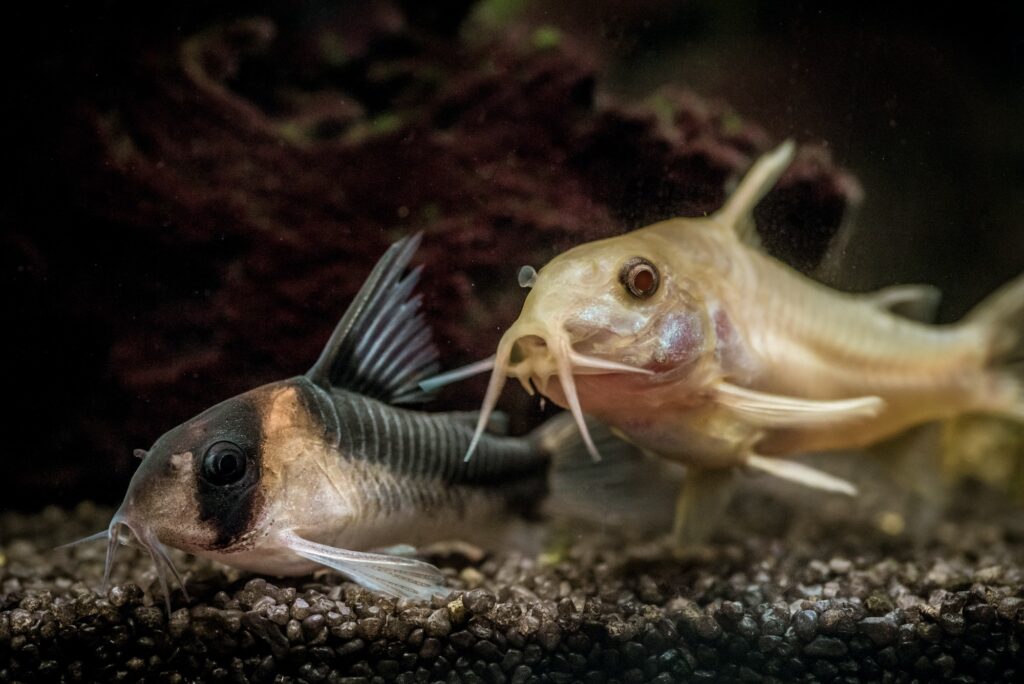
These bottom-dwelling catfish are excellent tank mates for X-Ray Tetras. They occupy a different part of the tank, reducing competition for space. Corydoras are also peaceful and add interest to the lower levels of the aquarium.
| Common/Market Names | Price Range | Care Level | Behavior | Life Span | Max Size |
|---|---|---|---|---|---|
| Cory Catfish | $3-$8 | Easy | Peaceful | 3-5 years | 2-3 inches |
Harlequin Rasbora
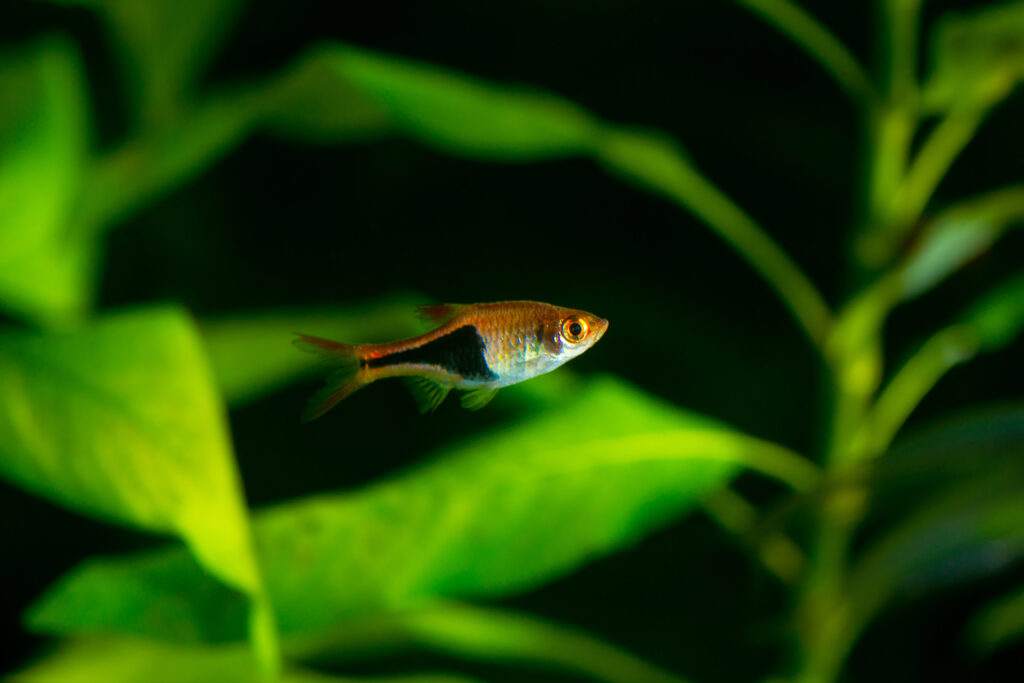
Harlequin Rasboras share similar water requirements with X-Ray Tetras. Their distinctive triangular shape and orange-red coloration provide a nice contrast to the X-Ray Tetra’s transparent appearance.
| Common/Market Names | Price Range | Care Level | Behavior | Life Span | Max Size |
|---|---|---|---|---|---|
| Harlequin Rasbora | $2-$5 | Easy | Peaceful | 3-5 years | 2 inches |
Dwarf Gourami
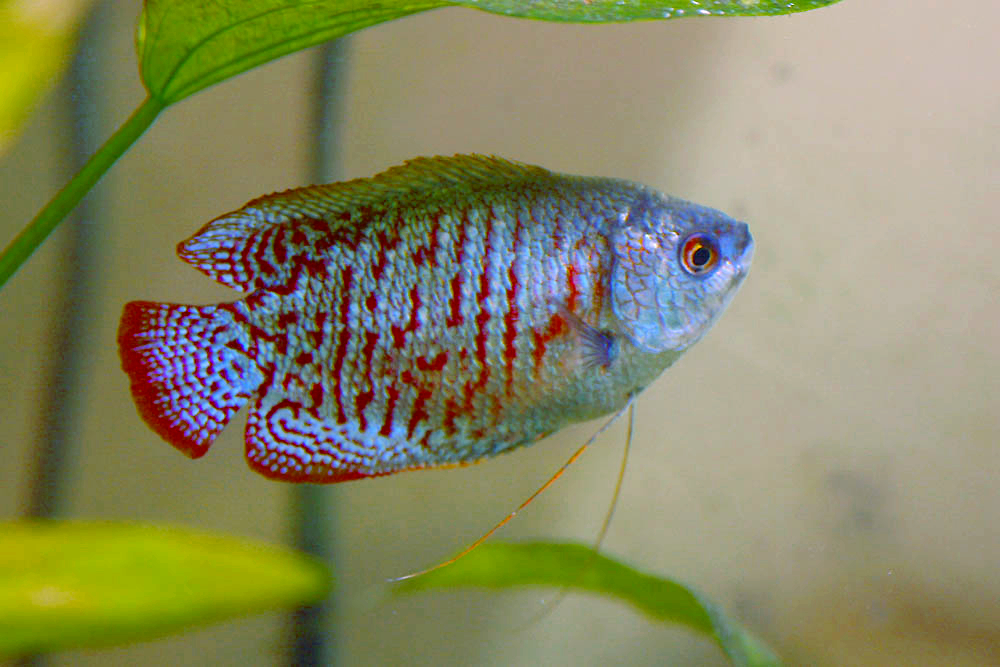
These colorful fish add a touch of elegance to the tank. While they are slightly larger than X-Ray Tetras, Dwarf Gouramis are generally peaceful and can coexist well, occupying different levels of the aquarium.
| Common/Market Names | Price Range | Care Level | Behavior | Life Span | Max Size |
|---|---|---|---|---|---|
| Dwarf Gourami | $5-$10 | Easy | Peaceful | 4-6 years | 3.5 inches |
Cherry Barb
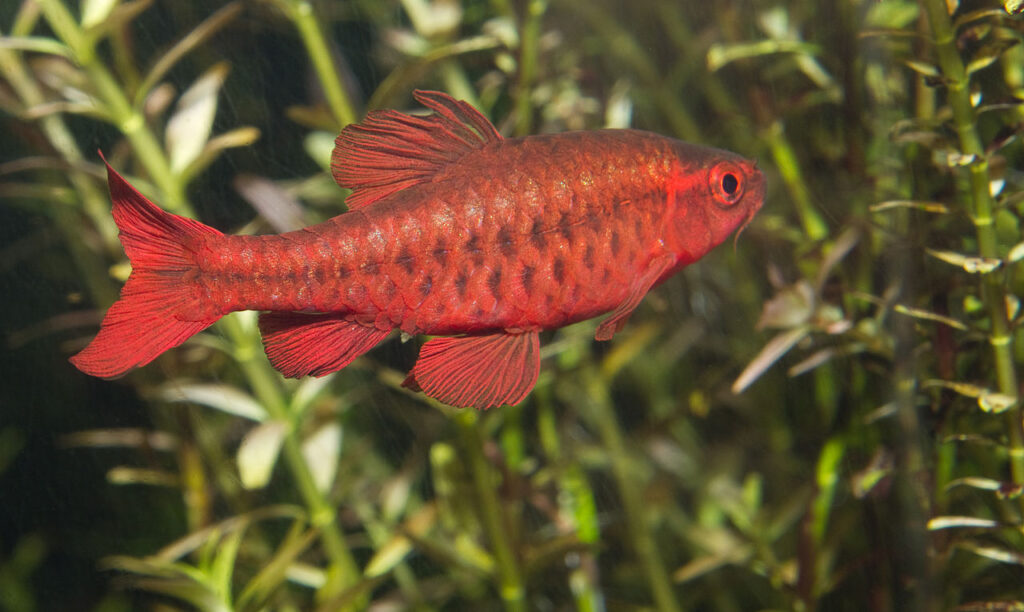
Cherry Barbs are active swimmers that can add a splash of red to your tank. They are peaceful and share similar water requirements with X-Ray Tetras, making them excellent companions.
| Common/Market Names | Price Range | Care Level | Behavior | Life Span | Max Size |
|---|---|---|---|---|---|
| Cherry Barb | $2-$5 | Easy | Peaceful | 4-6 years | 2 inches |
Otocinclus Catfish
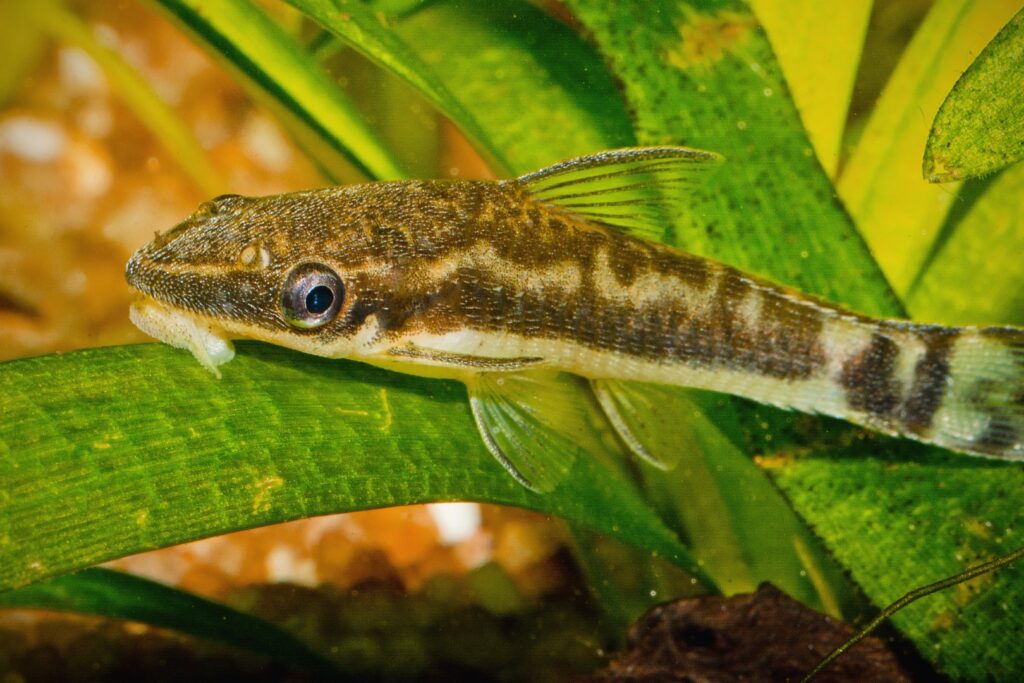
These small, peaceful catfish are excellent algae eaters. They occupy a different niche in the tank, helping to keep it clean while coexisting peacefully with X-Ray Tetras.
| Common/Market Names | Price Range | Care Level | Behavior | Life Span | Max Size |
|---|---|---|---|---|---|
| Oto Catfish | $2-$5 | Moderate | Peaceful | 3-5 years | 2 inches |
Ember Tetra
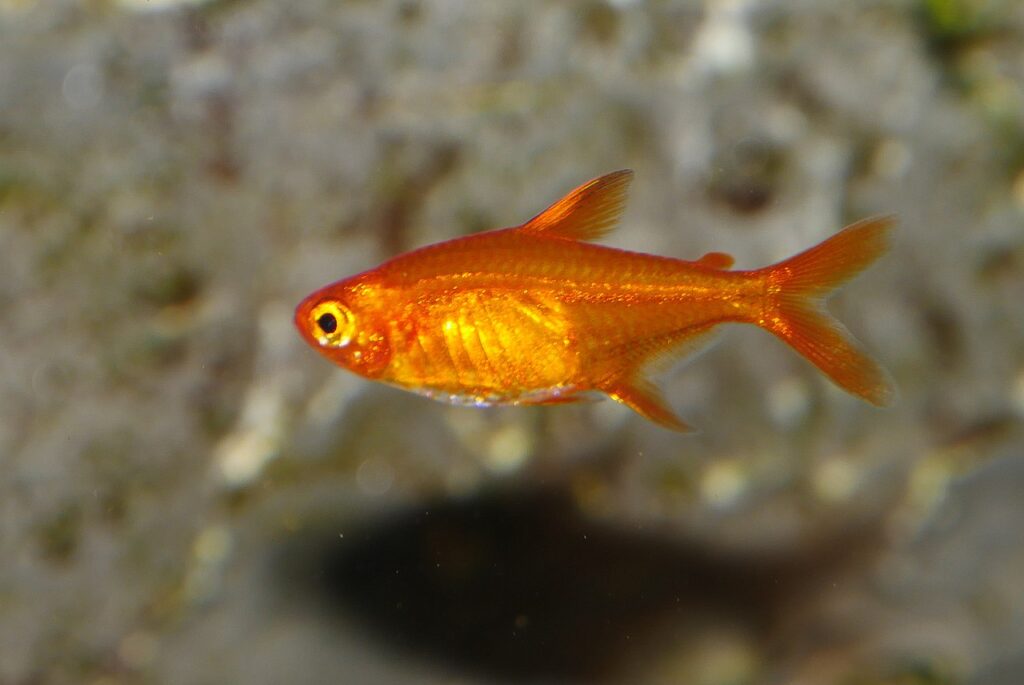
Ember Tetras are tiny, vibrant fish that school well with X-Ray Tetras. Their bright orange-red coloration adds a warm glow to the aquarium, complementing the X-Ray Tetra’s transparent beauty.
| Common/Market Names | Price Range | Care Level | Behavior | Life Span | Max Size |
|---|---|---|---|---|---|
| Ember Tetra | $3-$6 | Easy | Peaceful | 2-4 years | 0.8 inches |
Bristlenose Pleco
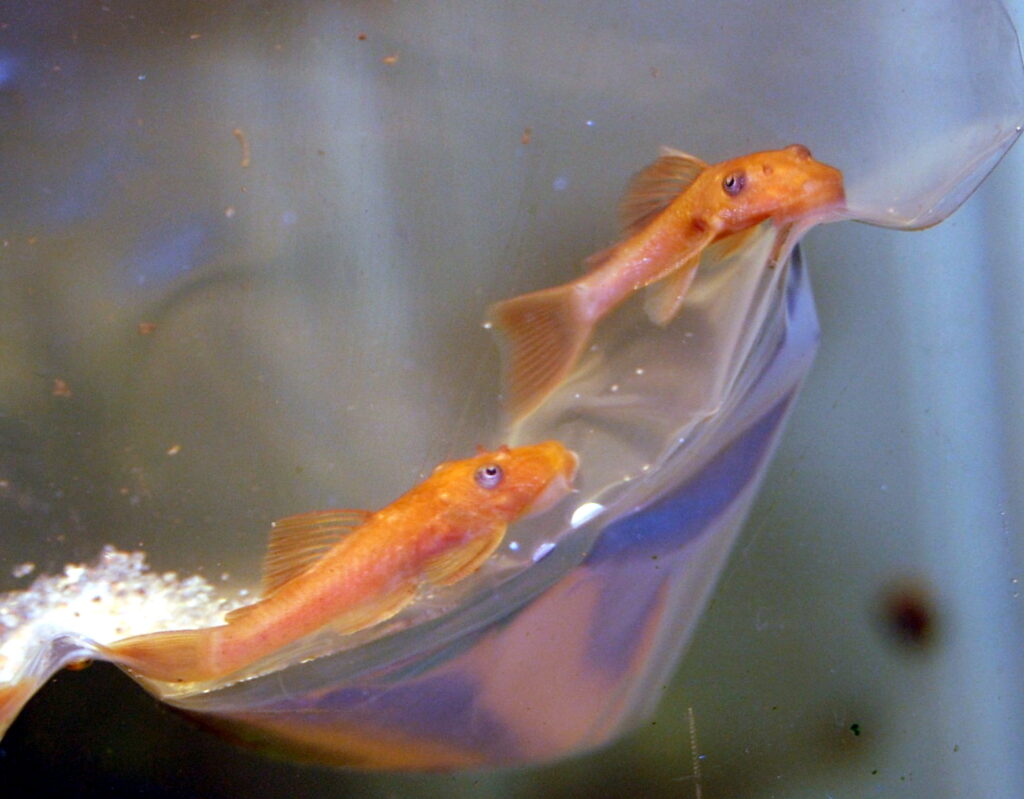
These small plecos are excellent algae eaters and bottom dwellers. They provide a unique texture to the tank with their bristly noses and help keep the aquarium clean without bothering the X-Ray Tetras.
| Common/Market Names | Price Range | Care Level | Behavior | Life Span | Max Size |
|---|---|---|---|---|---|
| Bristlenose Pleco | $5-$15 | Easy | Peaceful | 5-10 years | 4-5 inches |
Kuhli Loach
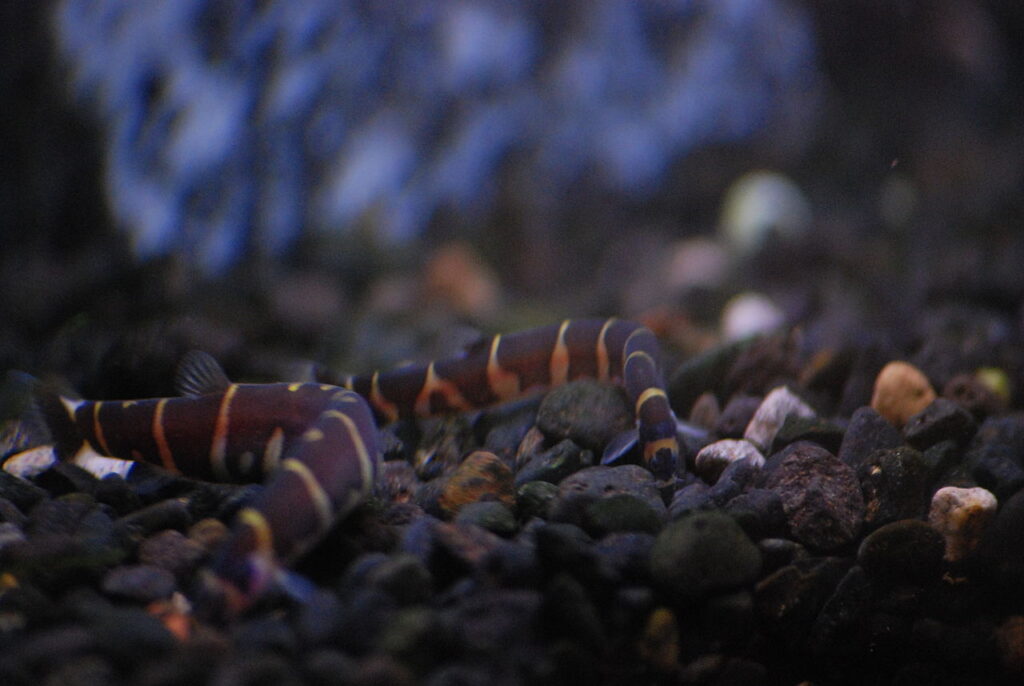
These eel-like bottom dwellers add an interesting element to the tank. They are peaceful and nocturnal, making them perfect companions for the more active, daytime-oriented X-Ray Tetras.
| Common/Market Names | Price Range | Care Level | Behavior | Life Span | Max Size |
|---|---|---|---|---|---|
| Kuhli Loach | $3-$7 | Easy | Peaceful | 10+ years | 4 inches |
Celestial Pearl Danio
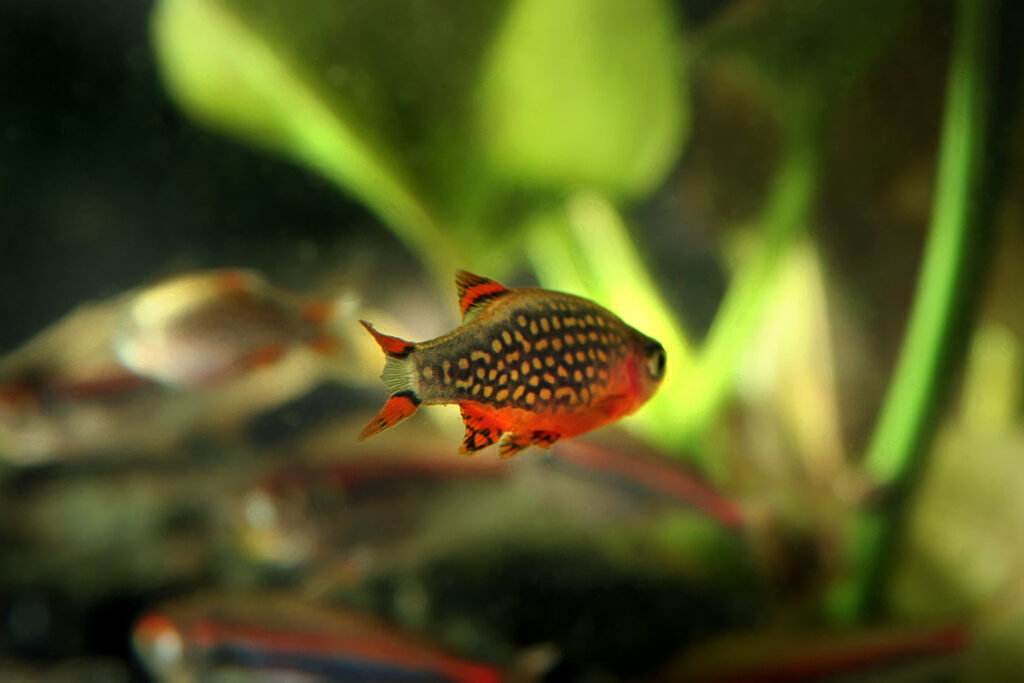
Also known as Galaxy Rasboras, these tiny fish have a striking pattern that contrasts beautifully with X-Ray Tetras. They prefer similar water conditions and their small size ensures they won’t outcompete the X-Ray Tetras for food or space.
| Common/Market Names | Price Range | Care Level | Behavior | Life Span | Max Size |
|---|---|---|---|---|---|
| Galaxy Rasbora | $5-$10 | Moderate | Peaceful | 3-5 years | 1 inch |
FAQs about X-Ray Tetra
How often should I feed my X-Ray Tetras?
Feed your X-Ray Tetras small amounts 2-3 times a day. Only give them what they can eat in about 2 minutes.
Can X-Ray Tetras live with shrimp?
Yes, X-Ray Tetras can live with most small, peaceful shrimp species like Cherry Shrimp or Amano Shrimp.
Do X-Ray Tetras need a heater?
A heater is a good idea for X-Ray Tetras. It helps keep their water at a steady temperature between 75-82°F.
How many X-Ray Tetras should be kept together?
Keep at least 6 X-Ray Tetras together. They are schooling fish and feel safer in groups.
Can X-Ray Tetras live in a pond?
X-Ray Tetras are not suited for outdoor ponds. They need stable, warm water conditions that are hard to maintain outside.
Do X-Ray Tetras jump out of tanks?
They can jump if startled. Use a lid on your tank to keep them safe.
How can I tell if my X-Ray Tetra is pregnant?
X-Ray Tetras lay eggs, so they don’t get pregnant. Females may look fuller when carrying eggs.
Are X-Ray Tetras fin nippers?
No, X-Ray Tetras are not known to nip fins. They are peaceful fish that get along well with others.
Can X-Ray Tetras change color?
While they don’t change color dramatically, X-Ray Tetras may look brighter when happy and healthy.
How do I acclimate X-Ray Tetras to a new tank?
Float the bag in your tank for 15 minutes, then slowly add small amounts of tank water to the bag over an hour before releasing the fish.
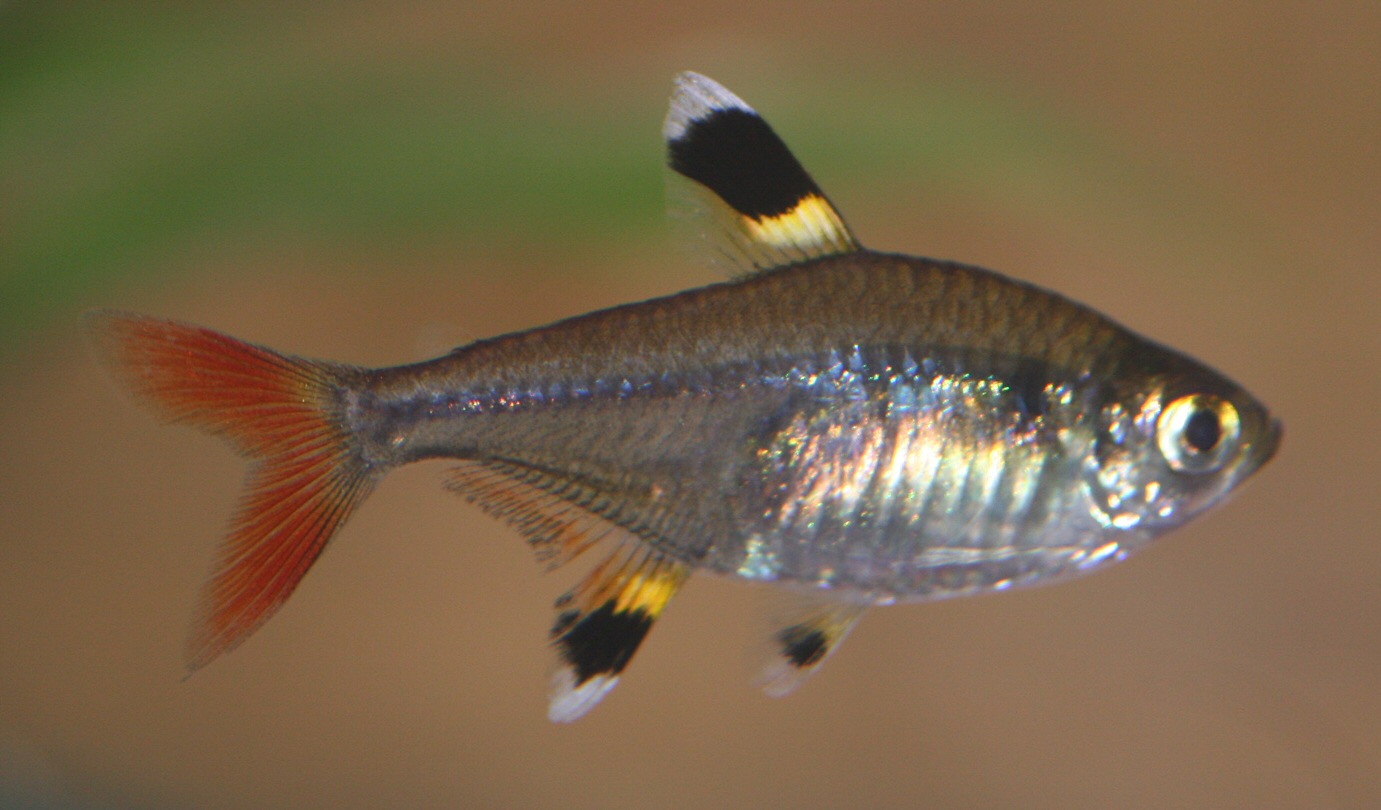
Leave a Reply